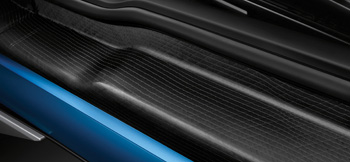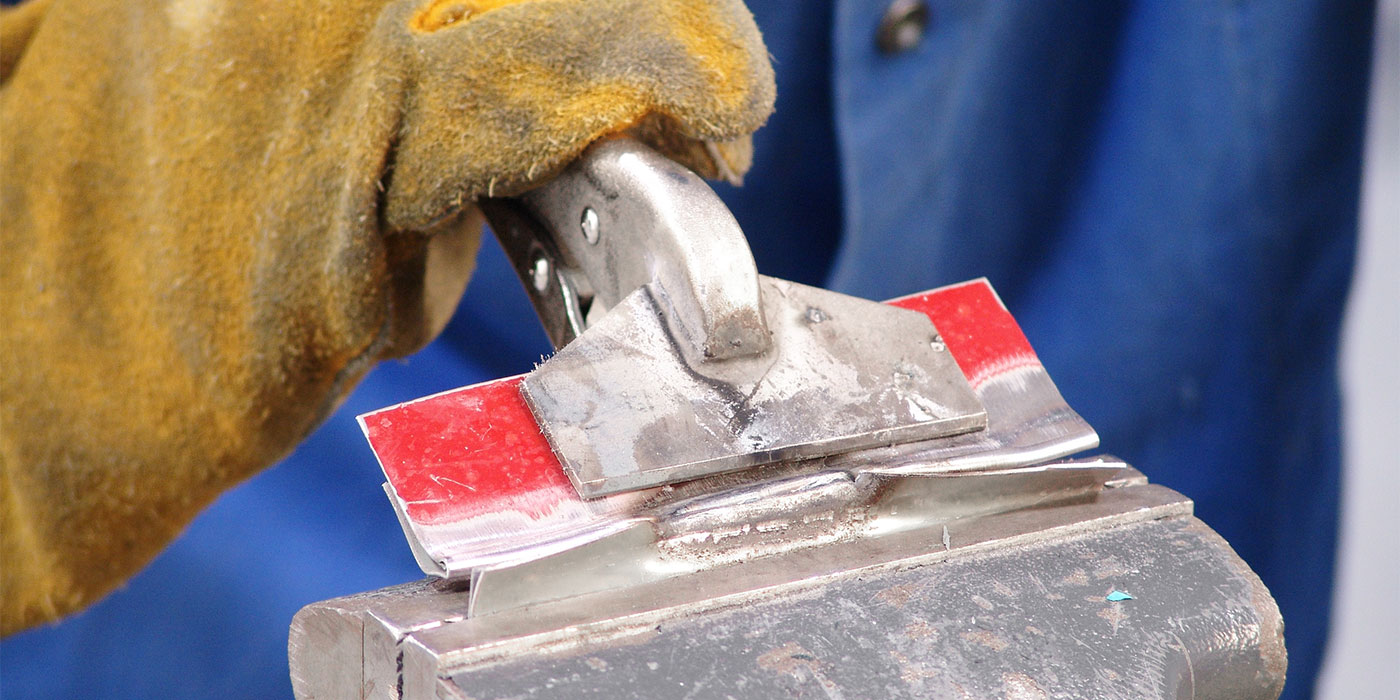 We’ve been hearing about car manufacturers increasing their use of carbon fiber. This talk seems to be coming to fruition as they scramble to meet the new government mandates on CAFÉ (Corporate Average Fuel Economy).
We’ve been hearing about car manufacturers increasing their use of carbon fiber. This talk seems to be coming to fruition as they scramble to meet the new government mandates on CAFÉ (Corporate Average Fuel Economy).
Products once only thought to be needed or wanted in projects for NASA or Boeing are streaming into the automotive world. With impressive performance results in the racing world, GM, BMW and Lexus are all seeing the potential for carbon fiber to benefit everyday vehicles.
Many more vehicle manufacturers are planning future composite products, which should come as no surprise to anyone since we’ve used similar composites for years. You’ve known them as fiberglass and SMC. As new steel requirements in auto manufacturing have brought changes, so too have composites. With these changes, considerations on training for these repairs might be in order.
Many vehicle recommendations for the repair of new composites will take practice. Some new tools may be required, and a dedication to detail will be necessary to perform quality repairs. The difficulty rating of composite repairs won’t be much harder than current systems today, just different.
Pros and Cons
First, let’s take a look at some pros of composite part manufacturing. Lightweight and strong top the list, in that the ability to be light and rigid for manufacturing large and complex shapes is a boom for manufacturers. Composites can be used cosmetically in fenders and hoods and also structurally in occupant compartments. This and corrosion resistance in any environment is an impressive start to a long list.
What are some of the cons? Well, composites are labor intensive, making them expensive to produce currently as mass production is lagging in this area. However, advancements in production have already seen an improvement. Repair procedures could be unique and somewhat time consuming. The other issue is different types of damage will have different repairs. Repair facilities will have to know how to access the damage to properly repair it, and specialty equipment will be required.
 What Is It?
What Is It?
Carbon fiber is a manmade fiber or filament with a carbon content that’s between 92 and 99 percent. It can be made into fibers, weave or cloth depending on use. When combined with resins, it can be shaped and molded into very stiff and/or complex designs.
Many of us have seen the exposed weave that shows in most pictures when looking at a Corvette. Carbon fiber has a long history in aerospace and racing and has a proven track record. Racecar builders have had issues where riveted aluminum race car structures would change or go soft, but vehicles using carbon fiber don’t seem to have that issue. Although expensive and difficult to mass produce, the benefits are there. Not being susceptible to corrosion is a major benefit.
Repair Info
Shops that work on specialty cars may have already started to research or train for carbon fiber repairs. Those who will be working with the 2014 Corvette and BMW i3 and i8 are seeing these vehicles already. For the rest of us in need of repair information, we need to do the research.
First, get some info. The CFR01 course from I-CAR is an excellent start. I recommend this course for all who are involved in the industry. The class is well written and very informative and teaches what you may need to know to make a repair decision. Manufacturer guidelines are critical as identifying these parts could be difficult if parts to be repaired are painted. A shop could be thinking a panel is SMC or fiberglass as there is some similarity in look to the parts. Even just identifying carbon fiber is not enough, though.
Acronyms like FRP, CFRP, LFRT and CFR will tell you about specifics, but this will not give you enough information for repair. The type of carbon fiber along with the amount of damage and its use will designate the repair. As mentioned before, carbon fiber can be cosmetic or structural. We find it being used in drivetrains and suspensions, too.
The Damage
Once you’ve identified the type of carbon fiber, we now need to look at the damage. Is this a cosmetic repair or structural? What materials will I need to make the panel as strong as before? Is the damage all the way to the edge? Has the area delaminated or disbanded? How is the carbon fiber used, chopped or woven? Is this painted or finished on one side or both? Is it laminated or sandwich core? Hopefully, someone somewhere is working on a flowchart system to identify all these types of uses and laminates.
When assessing damage, we need to know that many times, damage to the front will also damage the back. Distortions or even scuff marks may have damage inside such as lamination that has separated. Identifying damage and the extent of damage will take practice. A hammer or coin could give some indication, but is not always definitive. Thermal imaging equipment can also be used to establish the extent of the damage.
Repair Options » Once the damage is assessed, we can look at repair options. On painted, non-structural repairs such as chopped carbon fiber, the procedures are very similar to traditional composite repairs currently being used. Some cosmetic repairs of carbon fiber allow technicians to use a pyramid patch adhesive system. But not all can be done this way – this repair could lead to problems on thinner panels as carbon fiber contracts and expands at a certain rate. An adhesive patch repair will create a thick spot showing a ghost image of the repair. Knowing the limitations of repair materials is critical to success.
Strength of repair considerations may be an issue that forces a shop into a type of repair. These issues could be, for example, damage all the way to an edge, limiting the strength of a conventional repair. A conventional repair may not meet the requirements to make the panel itself structurally sound. To make a panel structurally sound again will require vacuum bagging. If the part is a weave, then vacuum bagging will be required to meet strength requirements. When choosing a procedure, be aware that what the manufacturer requires for repair is the No. 1 choice. Adhesive repair systems may not be able to return a panel to its proper strength.
Panel structural repairs using carbon fiber have two procedures that are most recommended. One is the wet layup, which has some similarities to the old fiberglass repair using a form of the pyramid patch system to start with. That’s where the similarity ends, however. A vacuum process is then used to compress and draw out excess resin.
The other procedure entails using cloths or weave pre-impregnated with resin or prepreg cloth. The only difference in this procedure versus the other one is that the resin is already in the cloth versus the technician applying the material.
Repair Basics
Let’s look at basics of the repair first before applying the material. Procedures will call for removing all of the damaged area. If the sandwich core is damaged, it will require replacement.
Tapering of the area will need to be done. This is where it gets really specific as the number of layers and orientation of the fiber must be considered. The amount of taper per layer is important. This is where I said it’s not difficult, just different. I should also say it’s a little time-consuming. Vehicle manufacturers will have a specific size of patch according to the damage and weave orientation of patches to be applied.
Once the taper is sanded and ready, a shop must decide if they will be using wet layup or prepreg cloth. Wet layup is different as the technician will be applying resins. The problem is if the repair is resin rich, it will become brittle. Prepreg comes with resin already applied. It is also frozen and must be thawed before use. Either way, the “plies or patches: must be applied in orientation with existing weave to not make stress in repair and to maintain repair strength.” Layers also called bleeders and breathers are used to make the system compress and allow excess resin to be removed when vacuum bagging is applied. This procedure I’ve spelled out is a little abbreviated as the layers and what they do are specific, so read the repair procedures for a more thorough guide.
With either procedure, the final procedures involve curing under heat and pressure. A heating blanket that can achieve the heat rating for the product used will be applied, and a vacuum system will apply pressure. A thermocoupler will be used to apply heat as needed for ramping up to the temperature
required and soaking at that temperature for a period of time. Once the soak is complete, a cool-down will start and the temperature will be decreased at a controlled rate. The ratio of expansion, contraction and cure is considered all throughout the process. The time involved can be hours for this step. The plies used will have compressed and cured, and final refinishing is done following vacuum bagging.
Just the Basics
Repairing carbon fiber may require other procedures that need to be performed to make specific shapes and sizes. These are just the highlights of a basic repair. The equipment and training may be expensive for little payback in the beginning, but as more vehicles are introduced and composite use increases, repair procedures may catch up or change to help meet cycle time for shops. Right now, it’s a specialty market. Lamborghini has doctors who fly to where the vehicle is, assess the damage and repair it if possible.
One factor to consider in carbon fiber is that all these procedures I’ve listed are for non-exposed carbon fiber panels. All exposed weave panels that suffer damage are not repairable as the weave cannot be lined up.
Because equipment and training is limited in the U.S., most procedures are replace-only on vehicles currently in production. But the amount of vehicles are increasing and, from what was shown at the SEMA Show, aftermarket and ground effects companies are increasing the use of carbon fiber. Today’s industry cannot afford to not train and learn as we’re moving faster than ever.
Mitch Becker is a technical instructor for ABRA Auto Body & Glass. Contact him at (763) 585-6411 or [email protected].














